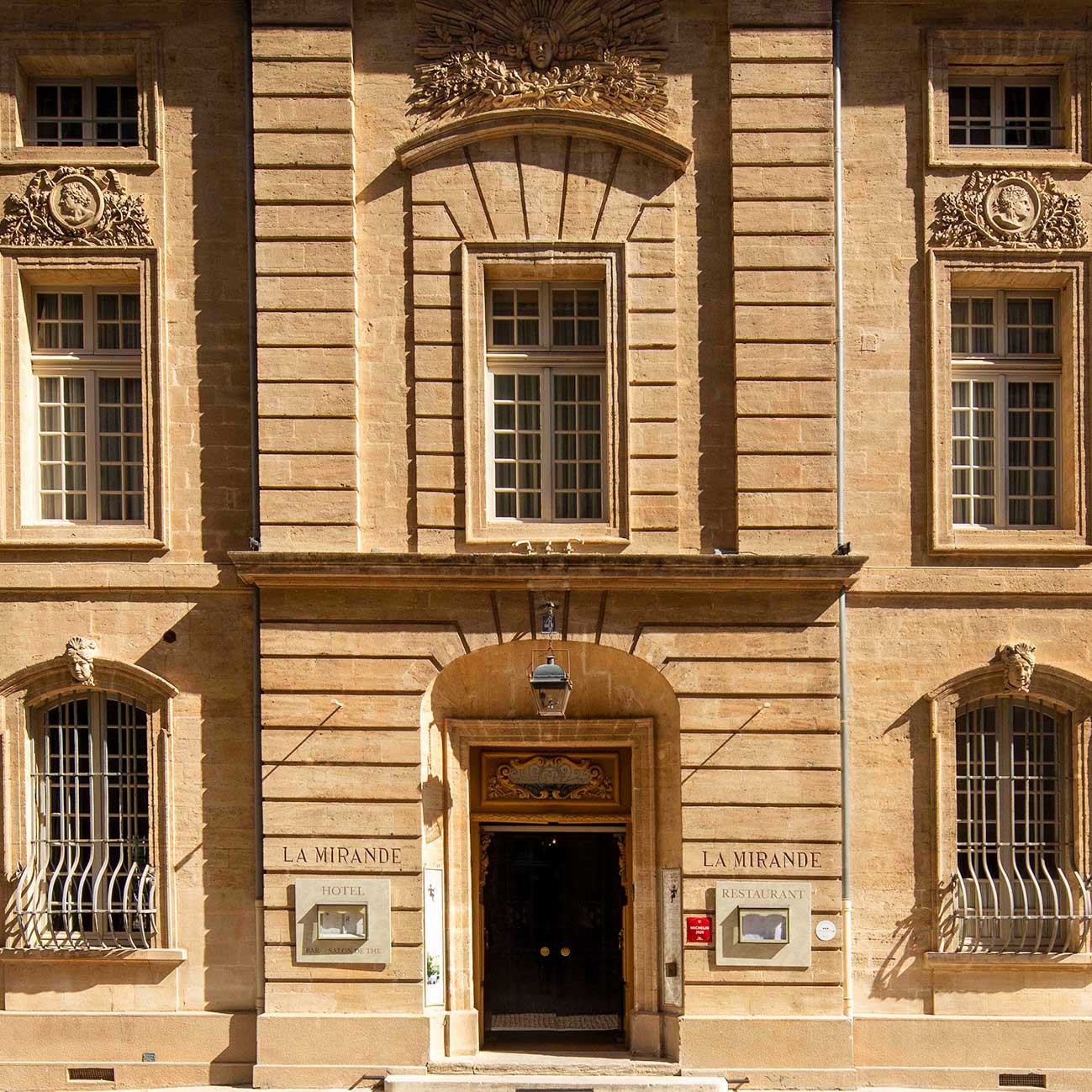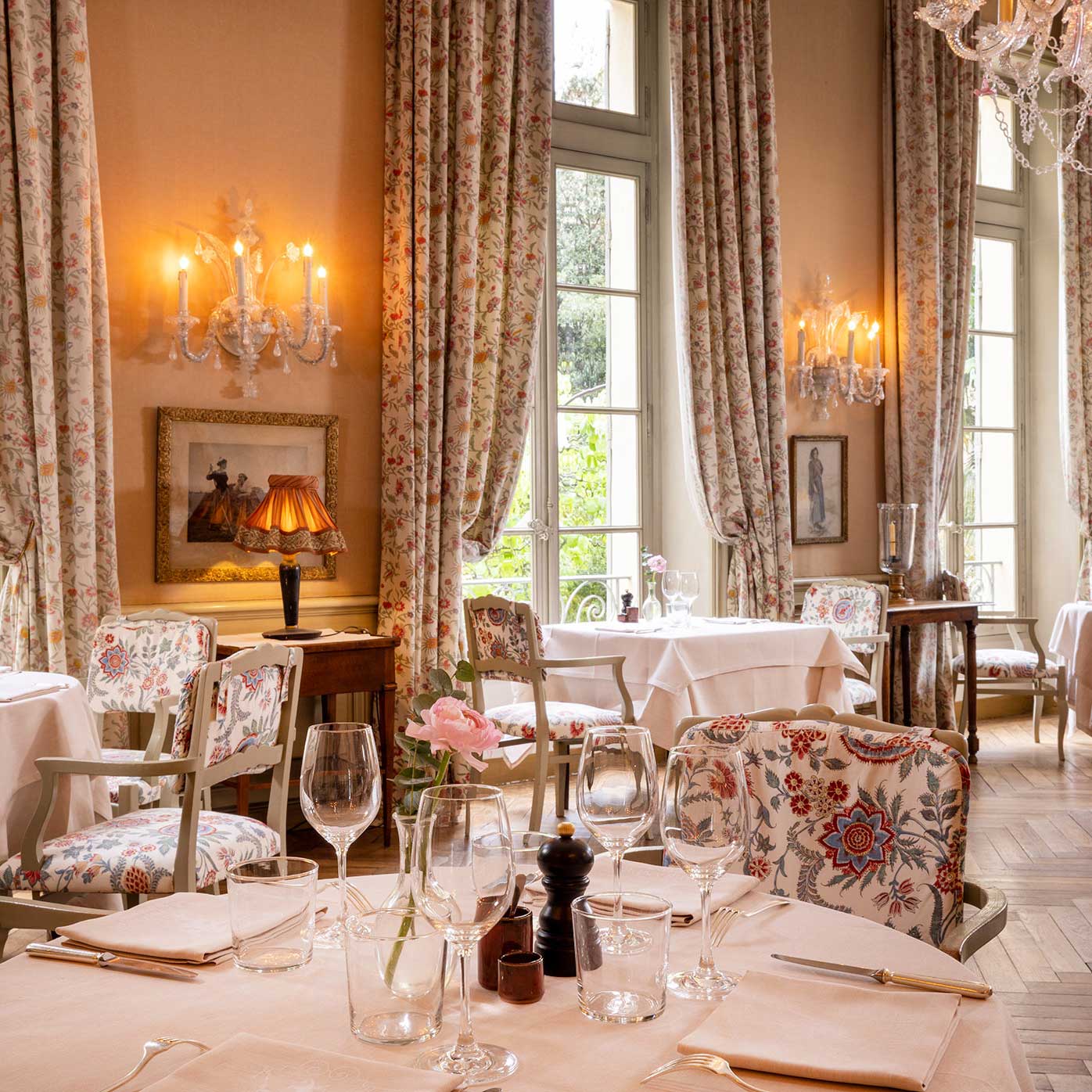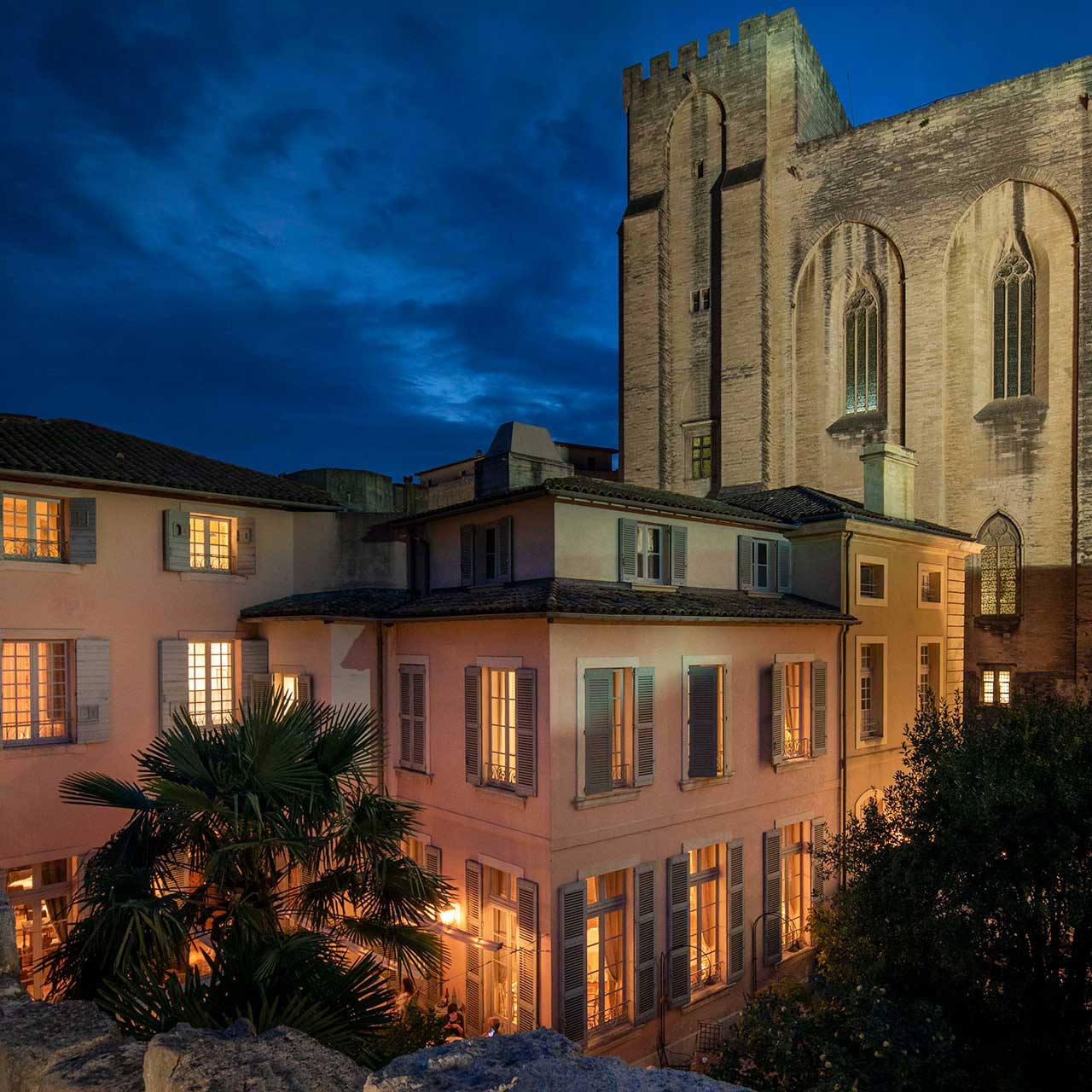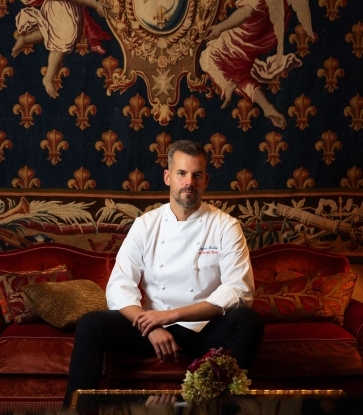Find our Inspection team's official review of La Mirande, here. Below, one writer shares his personal experience exploring the historical associations that make this one of the most unique hotels in the world.
As my train approaches Avignon, the sudden appearance of the city’s mighty ramparts flings me into a chivalrous world of musketeers and secret plots straight from the Alexandre Dumas novels I devoured in my youth. For me, a Parisian writer more fascinated by old stones than anything in our modern world, a night in Hotel La Mirande — my reason for visiting Avignon one night this spring — is a chance to live out a historic fantasy.
It takes just under three hours on a high-speed train from Paris to find yourself in front of the superb 17th-century facade, the work of the great classical architect Pierre Mignard. Scan your eyes to its neighbor and you’ll find the largest and arguably most important Gothic palace in Europe. Called the Palais des Papes, this glorious white fortress is the 14th-century headquarters from which the Avignon Popes once ruled Western Christendom.
The history of La Mirande is entwined with that of this miraculous palace. Stepping into the hotel, I walk through an arched doorway into a lobby almost overrun with 18th-century rococo armchairs and benches, all framed by heavy curtains and dangling chandeliers. Baroque candelabras flicker, lit, under gilded mirrors as I spot Francis Lacoste, the manager of this hotel, standing under a magnificently woven Aubusson tapestry.



Speaking as we walk through a journey of centuries of design, he tells me that although the Hôtel de La Mirande only opened some 30 years ago, its story began in the 1300s — with the cardinal who built this place to be near the pope. In fact, the palace next door could long be reached discreetly via this building’s cellars and ancient spiral staircase (still present today, though likely no longer accessible for clandestine visits).
The building was partly destroyed during a siege in 1410, and then rebuilt a couple hundred years later. In the 1800s, a wealthy Avignon family moved in, using the house as a base from which to entertain their friends in high society.
Its that latter era that a painstaking, spare-no-expense renovation of Hotel La Mirande sought to capture. The hoteliers achieved it with admirable aplomb. Cotton fabrics in historic style line the walls, and each of the 26 rooms sports a collection of antique furniture: period appropriate bedside and dressing tables, chests of drawers and little wooden desks, all hunted down over many years before finding their places at the hotel.
Stepping into my own room (no. 45), I admire the delicate rococo touches that compliment the superb printed fabrics, all in the style of the Ancien Régime of 18th century France. If you’re a connoisseur, think Indienne: the famous, Indian textiles that fascinated Europe in those years.
If you’re not, you’ll feel the magic nonetheless. Nothing breaks the spell. Breakfast is served in a superb rococo lounge, and the bar, bistro, and famous, Michelin-Starred gourmet restaurant all incorporate elements of historic Avignon. In my room, views look out over a timeless Provencal garden planted with palm trees. At night, I dim the many antique light fixtures and drift off to sleep — my head swirling with dreams of a France long past.



Nuts & Bolts
A bite-sized breakdown of your most frequently asked questions about La Mirande.
When’s the best time to visit?
The hotel has the advantage of being open all year round. If you're looking for peace and quiet, avoid the summer months, especially July, when theater lovers flock to the Festival d'Avignon — held partly in the courtyard of the Palais des Papes next door.
What else is there to do in the area?
The Palais des Papes, a Unesco World Heritage site, is just across the street from the hotel and is one of Provence's most fascinating monuments. Don't miss the chambre du Cerf, the former study room of Pope Clement VI, painted all around with sublime hunting scenes. Not far away, you’ll find the surviving ruins of the famous "Pont d'Avignon" — real name Pont Saint-Bénézet — a gorgeous medieval bridge that used to cross the Rhone, and there are plenty of other historic, architectural interests throughout the city.
What's the best room for couples?
Room number 20. We fell in love with its warmly colored fabrics and its breathtaking view of the Palais des Papes. We also loved the cement tiles in the bathroom and the artwork left on a mirror by French artist Sophie Calle.



What’s a design feature I would miss if you didn’t tell me about it?
Be sure to check out the tapestries covering the walls of the tea room, glued onto large wooden panels, and made in China in the 18th century according to western taste. Otherwise, we loved how discreet the televisions were, hidden in the mirrors — and how the antique light fixtures were updated with convenient dimmers.
What’s there to eat?
Set in the magnificent chapter house decorated with Brussels tapestries, La Mirande's Michelin-rated restaurant offers a gastronomic experience like no other. Florent Pietravalle's plant-based cuisine draws abundantly on the rich local terroir. The adjoining bistro, also run by the chef, offers simpler dining in an exceptional setting. Another point of interest — cooking classes are available at La Mirande as well, held in the basement in the old medieval cellars.
What’s the final word?
La Mirande is a simply wonderful ambassador of French art de vivre, a time capsule to the highest pleasures in design and luxury from centuries past. With just 26 rooms, it’s a place with a warm and intimate feel — a must-stay any historically-minded visitor to Avignon.

Related articles:
Top image: A characteristically characterful bedroom at La Mirande in Avignon, France. © La Mirande














